Coastal Indigenous and Minority Women Driving Kenya’s Blue Forest Conservation Efforts
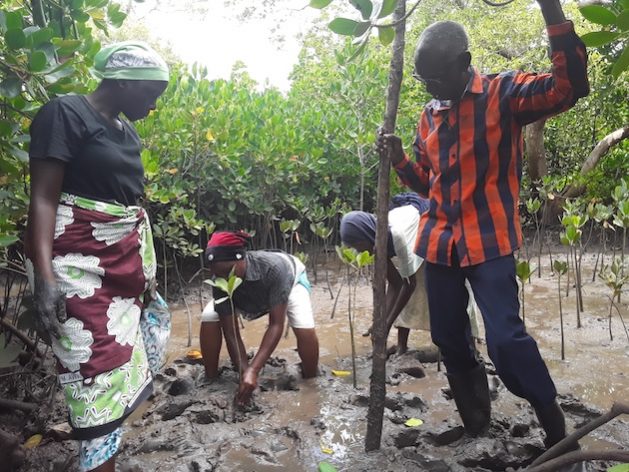
TSUNZA, Kenya, Feb 22 (IPS) - Fish vanished from the sea near Tsunza, a village on Kenya’s coast, after several oil spills between 2003 and 2006. The impact of this and the vanishing mangroves badly affected the livelihoods of women. Now they are the champions of the restoration of one of the global warming mitigation superheroes—mangroves.
Tsunza Peninsula is a natural wonder that sits just inside the many inlets of Mombasa Island on the border between Mombasa and Kwale Counties—a little-known spectacle of lagoons, islands, and thick mangroves in Kinango Sub-County, Kwale County, on Kenya’s coastal region.
This natural paradise is a beehive of activities, with fishers meandering through the creeks and returning to the shores after a dawn harvest. Dhows and motorboats glide from shore to shore, with tourists and locals travelling between the two neighboring counties.
What holds these activities together are the efforts of the 45 people, 35 of them women, of the Tsunza Fish Pond and Mangrove Restoration community project. They protect, preserve, conserve, and restore Tsunza’s mangrove forest and the entire ecosystem. Mangroves are not only a critical biodiversity hotspot; they are also coastal superheroes, a first line of defense against climate-induced coastal hazards.
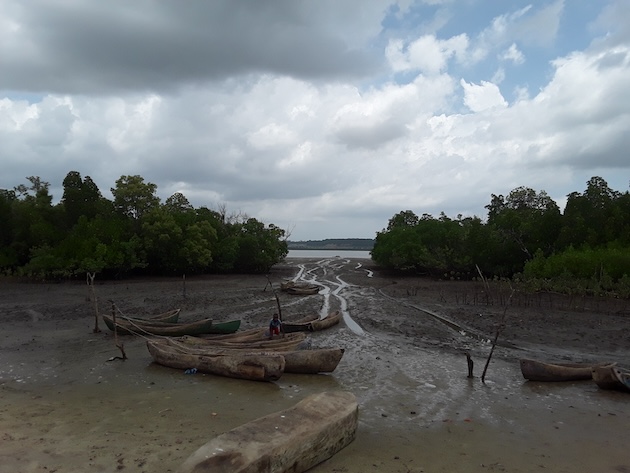
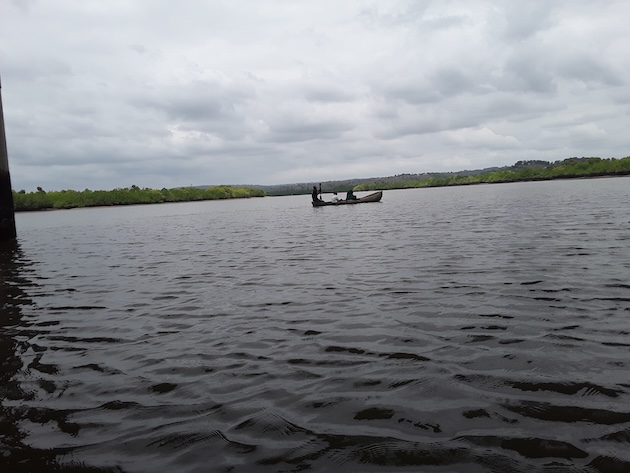
Mangroves are one of the most carbon-dense habitats on Earth. Its entire ecosystem of seagrass, coastal salt marsh, and coral reef vegetation is also known as a blue forest, capturing large amounts of carbon dioxide from the atmosphere and storing them in natural sinks—known as blue carbon. Their complex root systems and structure are a safe haven for fish and other aquatic species to live, eat, and breed, keeping them within the fisherman’s reach.
“Tsunza used to be a sleepy village, especially in the years following a series of mysterious oil spills between 2003 and 2006. Over five million liters of oil spilled into the Indian Ocean and into the mangroves. Over three million seedlings were destroyed. The mangrove forest was in danger of dying out and the fish disappeared into the deep water. Where Tsunza was once the leading producer of fish at the coast, Tsunza Bay became a no-go zone for fish,” Lucy Kazungu from Tsunza village, a member and one of the four leaders of the community project, tells IPS.
Mangroves are high-quality trees, most preferred for building materials, charcoal, and firewood. In this context, the logging and heavy degradation of mangrove forests were unfolding in Tsunza and along Kenya’s coastline, estimated to be 1,420 kilometers long. Overall, the country lost approximately 20 percent of its mangrove cover between 1985 and 2009, translating to 450 hectares of mangrove forest lost annually.
Government data shows more than 2.5 million people live in communities adjacent to mangrove forests, heavily depending on their resources for day-to-day survival and economic activities, unsustainably extracting from the forest until Mother Nature started fighting back. Minority and indigenous ethnic groups, who are the predominant groups on Kenya’s coastline, including the Digo, Duruma, Shirazi, Wapemba, and Wagunga peoples, were pushed to the frontlines of climate change.
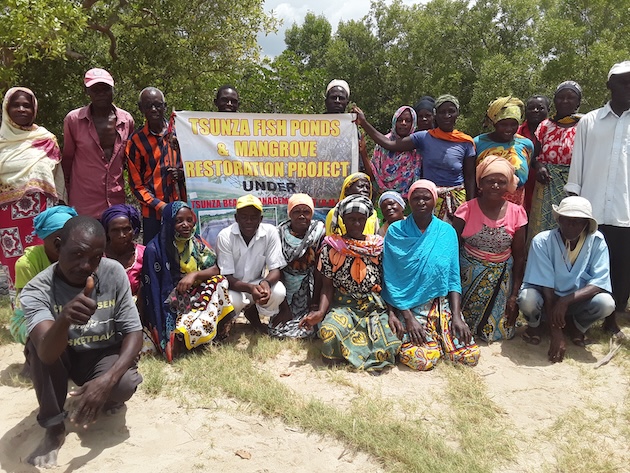
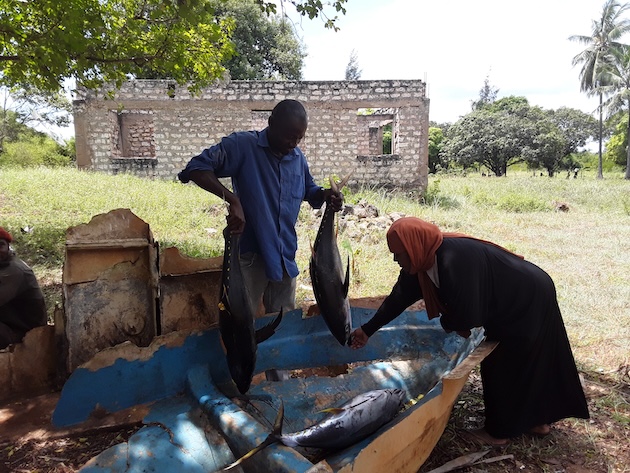
Women were particularly affected. Already vulnerable and largely excluded, the loss of mangrove cover and the entire ecosystem of swamps, shrubs, coral reefs, salt marshes, and seagrass vegetation meant even more exposure to severe coastal hazards and the loss of livelihoods.
“The fish started to disappear and only those who could fish in the deep waters fished. Women were heavily affected because we buy fresh prawn fish and Dagaa fish—the silver cyprinid—from fishermen, which we deep fry and hawk. This is the main source of income for women along the coastline. Women depend on the small fish and they are usually the first to disappear when the weather conditions are bad for them,” Hamisi Juma, a resident of Vanga Bay, adjacent to the Vanga Blue Forest, tells IPS.
“Then came the floods; we did not know that mangroves are a wall protecting us from the ocean. Our rice farms, which are also female-dominated activities, were completely destroyed. Our young children could not go to school during heavy rains due to flooding.”
The destruction of mangroves in Vanga Bay was particularly severe. Between 1991 and 2016, the community over-harvested mangroves at a rate of 0.5 percent per year, translating to 451 hectares or 1,114 acres of mangroves lost in 25 years.
“The coastal communities were unaware that mangrove forests and swamps and the entire ecosystem of seagrass and salt marsh vegetation are the most important ecosystems in battling climate change. Without the ecosystem to serve as the barrier between the community and the deadly Indian Ocean water, it would be a catastrophe such as what we saw in Libya, where a quarter of a city was destroyed by storms and floods in 2023,” says Omar Hassan Aden, an independent researcher and expert in climate change.
But as science trickles down to the community, women are emerging from the frontlines of climate change with the lessons, determination, and commitment to be at the center of climate action. Planting and growing mangrove seedlings to restore coastal mangrove forests while significantly contributing to preservation and conservation efforts.
“As women, we are the silent champions of saving mangroves. Last year, we planted more than 300,000 seedlings. We do not just put the seedlings into the ground; we care for them until they can grow with no other intervention. The Tsunza mangrove forest cover is one of the best, thick, and with very few spaces in between, and we are now being rewarded with high production of fish,” says Kwekwe Tsuma, from Tsunza village.
“We have even started a fish pond project and women no longer have to buy fish from the fishermen. We tend to the mangrove forest, sell mangrove seedlings, keep fish, and we also have a beekeeping project. Mangrove honey is smooth, unique, delicious, one of the best and treats several diseases.”
There are 8,536 hectares of mangrove forest in Kilifi, 8,354 hectares in Kwale and 37,650 hectares in Lamu, translating to 61 percent of the total mangrove forest cover, according to the most recent Ministry of Environment and Forestry statistics.
Research shows an estimated 16 percent of Kenya’s coastline is at higher levels of exposure to coastal hazards and if left unmitigated, this could rise to 41 percent. In November and early December 2023, deadly El Niño floods rocked the coastal region in regions such as Mombasa, where mangrove cover is minimal. The floods were severe.
Kwale County community-led initiatives such as Tsunza and Vanga Blue Forest are helping restore 3,725 hectares of degraded mangrove forest. Kenya’s Mikoko (Mangrove) Pamoja community-led committee is constituted of five women and eight men and is the world’s first successful coastal 'blue carbon’ project.
The Ngomeni Marereni community project restores and protects 640 hectares of highly degraded mangroves, significantly contributing to the restoration of 3,422 hectares of degraded mangroves in Kilifi County.
In Lamu, the Mtangawanda Mangrove Restoration Women Group is leading mangrove conservation, preservation, and protection efforts, contributing to the restoration of 14,407 hectares of degraded mangroves. It is expected that ongoing low-cost, high-impact community-led, community-driven efforts will restore Kenya's blue forest back to its former natural glory, saving coastal communities from the climate change onslaught.
IPS UN Bureau Report
Follow @IPSNewsUNBureau
Follow IPS News UN Bureau on Instagram
© Inter Press Service (2024) — All Rights Reserved. Original source: Inter Press Service
 Global Issues
Global Issues